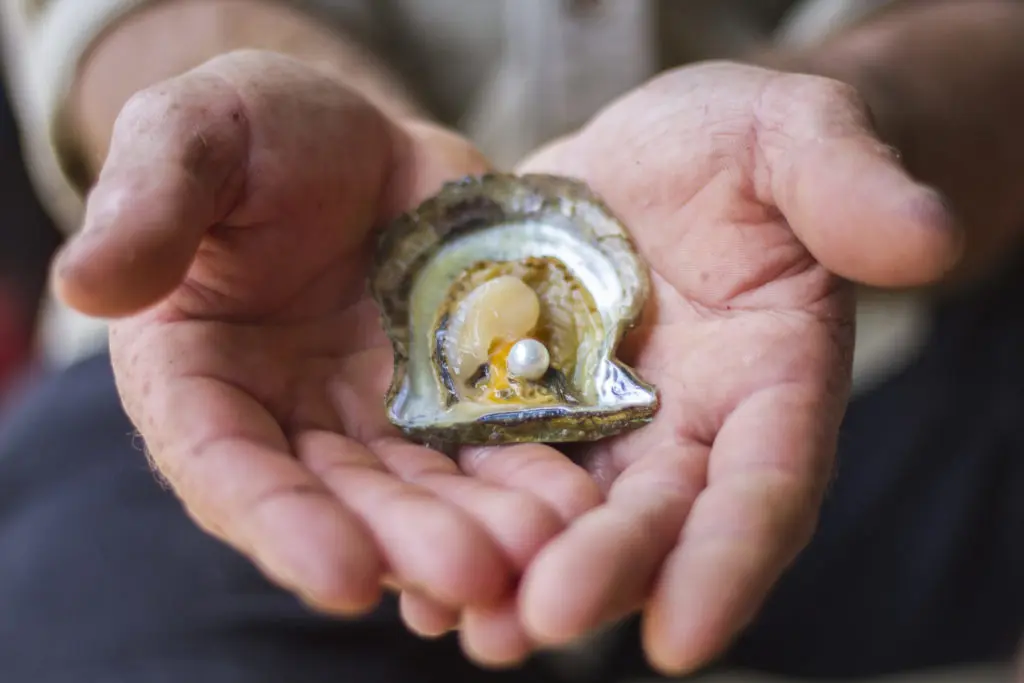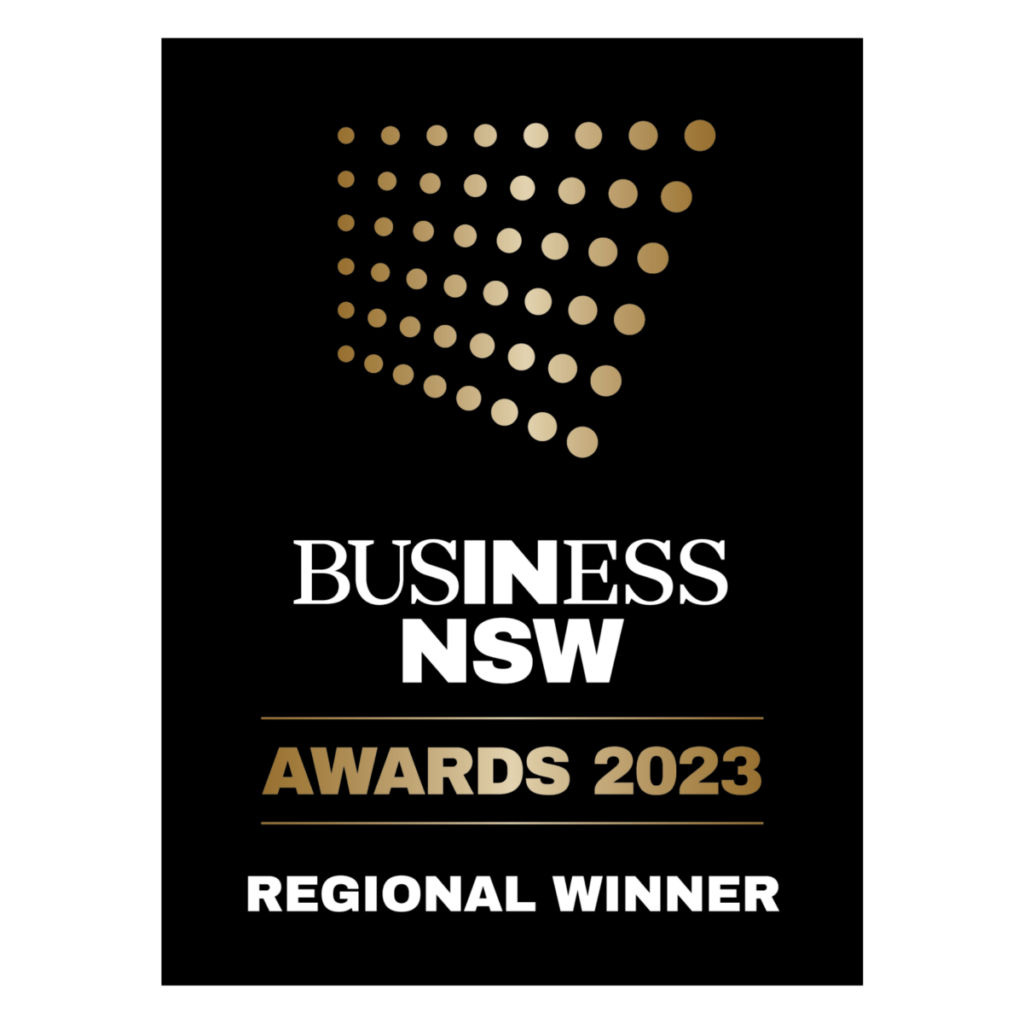What are Pearls and where do they come from?

BY PEARLS OF AUSTRALIA
Everyone knows what a pearl is, but how much do you really know about pearls? In this article, we’re going to take a deep dive (pardon the pun) into the pearl’s aquatic world and try to better understand these small, and not so small, wonders of nature.
How are pearls made?
Pearls are created as a result of the disruption of the epithelial cells of a mollusc, which is triggered by either an intrusion or a reaction to a parasite, however contrary to popular belief, this intrusion is rarely a grain of sand. In an attempt to protect itself from the intrusion or parasite, the oyster will secrete a substance called nacre around the intruder. Over time, layer upon layer of nacre is deposited until a pearl is formed. The pearls that we see for sale are typically cultured, meaning that humans have introduced the irritant into the oyster’s shell. When we do this, we refer to the irritant as a nucleus, and the process of introducing the nucleus into the oyster is known as seeding.
The process of growing a pearl is a delicate one. The pearl technician is required to spend several years learning the subtle art of inserting a nucleus. Meanwhile, the oyster requires two years to grow from its initial spat stage through to the point where it is ready to receive the nuclei. Once the nucleus has been inserted it takes a further two to three years for a pearl to form.
To ensure that the pearl is of high quality, it is important to carefully monitor the oyster’s progress. If the oyster is not healthy, the pearl will not be either. After a pearl has been formed, the pearl is carefully harvested, cleaned and gently polished. This process can also be quite precarious, whilst nacre is strong and resilient, pearls are amongst the most sensitive gems and should be handled with care to prevent any scratch or damage by contact with sharp objects or exposure to chemicals.
To give you an idea of just how rare a good-sized Australian South Sea pearl is, if you seed 1,000 shells, you will end up with just one pearl that excels in lustre, surface, shape and colour and that is above 14mm in diameter. As you can imagine, being a pearl farmer takes a lot of patience!
What is a natural pearl?
A natural pearl is found in the ‘wild’ and formed organically, without human intervention, when an irritant accidentally finds itself inside an oyster or mollusk shell. This irritant could be a be a piece of coral or the tip of a crab claw, and when it enters the shell, it activates the defense mechanism of the shell. The defense mechanism of the shell and the way in which it protects itself from this irritant is to secrete layers of a substance called nacre. This layering of nacre coats the irritant that has found its way into the shell and this process slowly creates a pearl over the span of several years.
In the late 19th century, specialised pearl divers collected shells from the seabed’s in an attempt to find precious pearls. Finding a natural pearl is an incredibly rare feat, as explained above, pearls are created by a shell as a defense mechanism – to contain and neutralise irritants that have found their way into the shell. When this occurs, the irritant is coated in nacre and then the shell aims to ‘spit’ the irritant out. Therefore, most shell’s aim to expel the irritant once it is covered in nacre and this can make finding a natural pearl more rare.
So in conclusion, natural pearls are universally considered extremely rare, with most natural pearls only found on the antique market today.
What is a cultured pearl?
Cultured pearls are real, genuine pearls that are produced by an oyster or mollusc shell, but with human assistance. Pearl cultivation involves the process of a pearl farmer carefully inserting an irritant in the form of a tiny bead called a nucleus. This in then followed by a piece of mantle tissue, and both are inserted in the reproductive organ of the shell. In here layers of nacre are formed.
This process of culturing pearls was introduced in the 19th century, and this process occurs at our pearl farms with the process being carried out by skilled pearl farmers and technicians. One of the founders of our very own Cygnet Bay Pearl Farm, Lyndon Brown, was one of the first Australian pearl technicians to master the technique of culturing pearls, and then went on to do this in a commercial manner. You can visit the pearl farm today and learn all about the history of pearl farming in Broome.
What is nacre?
Scientifically speaking, mother of pearl is the nacre produced by the shell. Nacre is a substance composed of calcium carbonate crystals, silk proteins and other organic materials which are layered like brick work over the inner lining of the shells. This layering results in the wave striations that can be seen on shells.
The iridescence of the nacre comes from the way that each successive layer of the nacre secretion thickens based on the amount of visible light available. The layers of varying thickness causes light to reflect off the nacre from different depths, causing any visible layers to appear as different shimmering colours.
What colours do pearls come in?
Pinctada maxima deliver rare and sought-after South Sea pearls which come in colours ranging from the purest white to the deepest gold. Pinctada margaritifera, commonly known as the black-lip pearl oyster, produces darker shades of grey, green, blue and reddish pearls. Pinctada fucata and imbricata have been giving birth to Akoya cultured pearls for over 100 years primarily in neutral colours and softer hues but also in lavender, cream and sometimes even gold. Hyriopsis cummingi produces most of the freshwater variety of pearl and can appear as blue, green, peach, pink, gold, cream white and grey. They are often dyed in even more striking colours including copper, black, red, or other bright colours.
Whilst colour can be a result of a pigment, it is strongly driven by nacre structure, homogeneity, and relative thickness. Green, orange, and pink overtone often complemented good quality pearl colour. Exceptional gems feature a rainbow-like prismatic effect called orient for South Sea pearls and peacock for Tahitian pearls.
Where do pearls come from?
Well, that depends on the type of pearl. The Akoya pearl (Pinctada fucata and/ or imbricata) is cultured in Japan, China, Vietnam and Australia, where we culture this pearl at our Broken Bay Pearl Farm on the mouth of the Hawkesbury River just north of Sydney.
South Sea pearls are a type of saltwater pearl and are considered the rarest of all types of pearls. They come from the Pinctada maxima shell, where the name “South Sea” originates from the location of the shell, as these shells are found in the southern hemisphere – particularly around northern Australia, Indonesia, the Philippines, Burma and French Polynesia.
What are the different types of pearls?
There are two main different types of pearls which include Saltwater pearls and Freshwater pearls. Saltwater pearls are then categorised into South Sea pearls, Akoya pearls and Tahitian pearls.
What are the Pinctada family of pearl shell?
These are our Saltwater pearl producing pearl shells and as mentioned, include our South Sea, Akoya and Tahitian pearls.
What are South Sea pearls and how are they different?
South Sea pearls are a type of saltwater pearl and are considered the rarest of all types of pearls. They come from the Pinctada maxima shell, where the name “South Sea” originates from the location of the shell, as these shells are found in the southern hemisphere – particularly around northern Australia, Indonesia, the Philippines, Burma and French Polynesia.
Our South Sea pearls are sustainably cultivated in the pristine and remote waters of our Cygnet Bay Pearl Farm, located on the Kimberley Coast, WA.
What are Akoya pearls and how are they different?
An Akoya pearl is a type of saltwater pearl that comes from the Akoya oyster. These oysters are mainly found in the colder waters off the coast of Japan, as well as Vietnam, Korea and Australia. China was a large producer of this pearl type, however, due to several factors, this is no longer the case.
Our Akoya pearls are sustainably cultivated in the lower Hawkesbury, at our Broken Bay Pearl Farm, located on the Central Coast of NSW.
One of the main reasons that so many of the world’s Akoya pearls come from Japan is because it was the Japanese son of a noodle store owner, Kokichi Mikimoto, (perhaps you recognise the surname?) who first learned how to consistently culture pearls. Mikimoto was then instrumental in creating the global cultured pearl industry, a remarkable story and one that we will cover in a future article. While their freshwater cousins average a whopping 20-50 pearls in a single culturing cycle, it would be a rare occasion where an Akoya pearl oyster would produce more than two.
What are Tahitian pearls and how are the different?
Black or Tahitian pearls (Pinctada margaritfera) are synonymous with Tahiti (French Polynesia), although they can also be found in Papua New Guinea, Australia, Cook Islands, Indonesia, India, Japan, Sudan, the Persian Gulf, the Red Sea the Andaman and Nicobar Islands, and several other locations between the tropics.
What are Keshi pearls and how are they different?
Seedless (or Keshi in Japanese) can be found in any location where cultured pearls are farmed and are a beautiful by-product of pearling. Often the result of an unsuccessful seeding, Keshi can be found in the oyster’s reproductive organ and the mantle of the oyster. They usually come in irregular shapes and small sizes and account for under 1% of the total harvest. They are the closest thing to a natural pearl and their relative rarity and often superior lustre can make them more valuable than their nucleated counterparts all other virtues equal.
What are Freshwater pearls and how are they different?
Freshwater pearls are overwhelmingly produced by China; however, this pearl type is the most geographically diverse of all pearl types and used to be found in wild mussels growing in rivers and lakes all over the world until their natural habitats started to be affected by the impact of human population growth.
What are the shapes and sizes of a pearl?
There are many different shapes and sizes of a pearl. Round pearls are the most common, but there are also oval, baroque, and pear-shaped pearls. The shape and size of a pearl is determined by the type of mollusc it came from as well as the water conditions in which it lived. This is why we are so fortunate to have our Cygnet Bay Pearl Farm located in the world’s largest tropical tidal zone on the Dampier Peninsula, as this means a vast amount of nutrients are constantly being fed to our lucky oysters. It’s a bit like having the world’s best nutritionist for your sports team!
Baroque pearls are the most irregular of all the shapes and can be very interesting to look at. Some people even find them more attractive than round pearls. Perhaps they believe their unusual shape gives them a sense of character. Pearls that are less than a millimetre in size are called seed pearls. They are usually used in jewellery as accents or in settings where their small size won’t be noticed.
Pearls can range in size from less than a millimetre to over twenty millimetres. The largest finest quality, white pearl in the world was harvested from our Cygnet Bay Pearl Farm and now sits proudly in our Broome showroom. It’s a whopping 22.4 mm in diameter!
How are pearls graded?
Unlike diamonds with a universally accepted scale for grading, different pearl organisations worldwide use different scaling processes to grade the pearls.
Most pearl organisations use the same virtues or value factors to describe and classify pearls: shape, size, colour, surface and lustre. Grading systems have been developed to cater to specific pearl types and usually combine lustre and surface to reflect quality as shape, size and colour are considered highly subjective.
The system we use here at Pearls of Australia ranges from B2 to A1 with B2 being the lowest quality and A1 being the highest quality. The other popular way to grade pearls is on a scale from A to AAA with A being the lowest quality and AAA being the highest quality. The factors that are considered when grading pearls are size, shape, colour, lustre, surface quality, and nacre thickness, although this last factor is usually only taken into account when evaluating pearls of the highest quality, and the process to do so often involves using x-ray technology or looking through the drill holes to see where the nucleus and nacre coating meet.
We have created a more in-depth look at the pearl grading process to highlight this crucial stage in the creation of these precious gems.
How do you tell if pearls are real?
The surface of the pearl
There are a few things you can do to determine if a pearl is real or not. The first thing you can do is look at the surface of the pearl. A real pearl is more likely to have surface irregularities, unless it’s very expensive, while a fake pearl often has a perfect surface. This means fake pearls will feel much smoother to the touch than real pearls, which have a gritty texture. You can also apply the tooth test to check for grittiness. This involves rubbing the pearl lightly against the front of your tooth. Remember not to rub the pearl against the side of your tooth, as this may scratch the pearl. Again, you’re looking for a gritty texture, which you won’t get if the pearl is fake.
The colour of the pearl
The second thing you can do is look at the colour of the pearl. Fake pearls have a uniform colour, so if a pearl is real, what we’re looking for is a translucent overtone that could appear either green or pink over the main colour. Exceptional quality pearls may however have a uniform colour, so this factor should not be used in isolation.
The shape of the pearl
The third thing you can do is look at the shape of the pearl. A real pearl can often be misshapen (baroque), so if the pearls you’re examining are perfectly round, and are either at a low price point or are being sold from a less than reputable retailer, then there is a good chance those “pearls” will be fake. Additionally, real pearls are unique in that no two are exactly alike – their shapes and sizes will vary.
The lustre of the pearl
Just as we’ve seen with surface, colour and shape, the lustre (the way that the pearls radiate light), also varies with real pearls, while the fake pearls are more likely to radiate light evenly over the entire surface of the pearl. Further, the depth of lustre with real pearls is very pronounced, which gives the sense that the light is radiating from within the pearl. The lustre or lack thereof, of the fake pearls, gives the impression that this effect is shallow and only appears at the surface of the gemstone.
Fake pearls are often created using a process of moulding one of the compounds mentioned above and then coating the surface with a pearl-like substance. As a result, they are not as dense as real pearls and will usually be lighter in weight. Fake pearls may also feel abnormally heavy as they may have been given some additional weight, while the real thing will have a weight that you would have expected it to have.
The sound of the pearl
Another way to tell the difference between fake and real pearls is by their sound. Real pearls sound less “tinny” than fake ones, which tend to resonate more hollowly. Another way to differentiate between the two is by how they react to being rubbed. Real pearls will create powder when rubbed while fake pearls will not, however, this activity will cause damage to the surface of the pearl, so we wouldn’t recommend using this as a way of determining pearl authenticity.
The temperature of the pearl
The temperature of the pearl can be a good indicator of its authenticity or otherwise. A real pearl will feel cool but will warm up once it’s been in contact with skin. Fake pearls can feel sticky and will be warm even without having been handled.
How to learn more about pearls?
We hope this gives you a greater insight into the wonderful world of pearls. The pearl farming process is truly remarkable, and the finished product is the result of countless hours of hard work, dedication, and a love of the entire process by the fantastic team here at Pearls of Australia. If you have any questions about pearl jewellery, please don’t hesitate to book a free consultation with one of our expert consultants.








